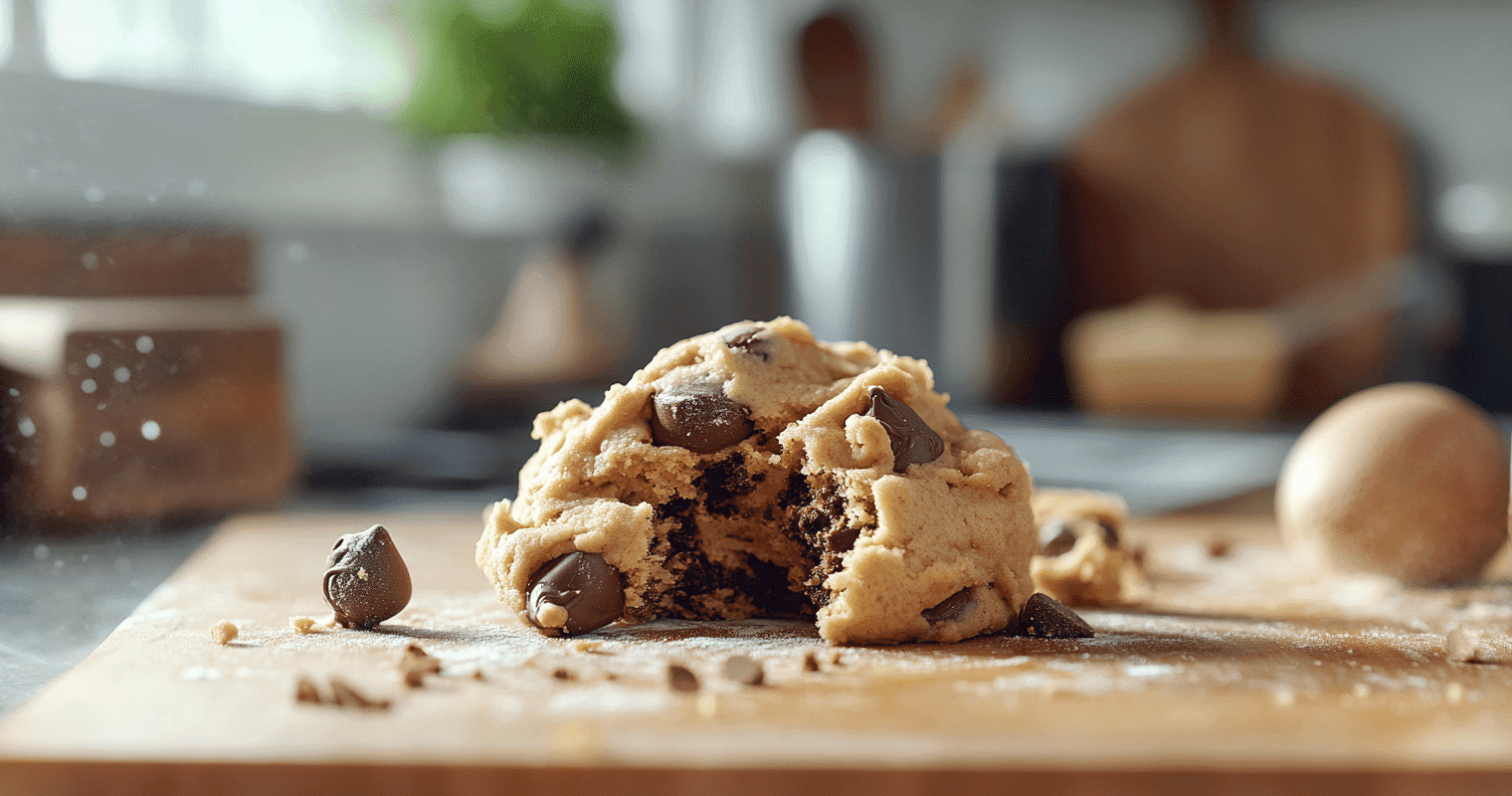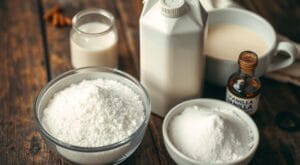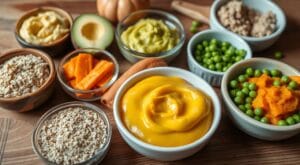Jump to:
Estimated reading time: 12 minutes
Table of contents
Introduction: Cookie Dough vs Batter
Baking is both an art and a science, where the balance of ingredients and the methods used can drastically affect the final product. For many, terms like “cookie dough” and “cookie batter” might seem interchangeable. However, understanding the differences between cookie dough vs batter is crucial for anyone looking to master the art of baking. Whether you’re making classic chocolate chip cookies, delicate pastries, or any other baked treat, knowing how and why these two mixtures differ will empower you to create better, more consistent results in your kitchen.
In this article, we will explore cookie dough vs batter in-depth, covering everything from their basic compositions to their roles in baking. By the end, you’ll have a clear understanding of how to use each one to achieve the perfect texture and flavor in your baked goods.
What Is Cookie Dough?
To fully grasp the concept of cookie dough vs batter, it’s important first to define what cookie dough is. Cookie dough is a thick, pliable mixture used as the base for making cookies. It typically contains a balance of dry and wet ingredients, including flour, sugar, fat (like butter or oil), eggs, and leavening agents such as baking soda or baking powder.
The Composition of Cookie Dough
Cookie dough’s composition is designed to create a dense, sturdy mixture that holds its shape both before and during baking. The following ingredients are commonly found in cookie dough:
- Flour: Flour is the backbone of cookie dough, providing structure and stability. The gluten in flour gives the dough its elasticity, allowing it to hold together without becoming too crumbly.
- Fat: Fats like butter or shortening add richness and moisture to the dough. They also play a key role in the texture of the finished cookie, contributing to its tenderness and helping to create that melt-in-your-mouth sensation.
- Sugar: Sugar sweetens the dough and also impacts its texture. Granulated sugar tends to create a crispier cookie, while brown sugar adds moisture and creates a chewier texture.
- Eggs: Eggs act as a binding agent, holding the dough together and contributing to its moisture content. They also add richness and help the cookies to rise slightly during baking.
- Leavening Agents: Baking soda or baking powder is often added to cookie dough to help it rise and spread during baking, creating a light, airy texture.
For more insights into how these ingredients work together, you can refer to Key Cookie Dough Ingredients.
The Role of Cookie Dough in Baking
Cookie dough is unique in that it can be shaped, rolled, or scooped into uniform portions before baking. The consistency of the dough allows it to hold its shape, which is why cookies often maintain their form after baking. The dough is also firm enough to support mix-ins like chocolate chips, nuts, or dried fruit, ensuring that these ingredients are evenly distributed throughout the cookie.
Common Uses of Cookie Dough
Cookie dough is most commonly used to make traditional drop cookies, like chocolate chip or oatmeal raisin. However, it can also be used to create cut-out cookies, where the dough is rolled out and cut into shapes before baking. The versatility of cookie dough makes it a staple in any baker’s kitchen, offering endless possibilities for creative cookie designs and flavors. For a great recipe, check out Perfect Cookie Dough Recipe.
What Is Cookie Batter?
To better understand cookie dough vs batter, let’s now look at what cookie batter is and how it differs from cookie dough. Cookie batter is a thinner, more liquid mixture that is often used for making cookies that spread more during baking. Unlike cookie dough, which is thick and can be rolled or scooped, cookie batter is typically poured or spooned onto a baking sheet.
Cookie Dough vs Batter The Composition of Cookie Batter
Cookie batter generally has a higher ratio of liquid ingredients to dry ingredients compared to cookie dough. This gives it a looser, more fluid consistency. The typical ingredients found in cookie batter include:
- Flour: While flour is still a key ingredient, there is usually less of it in batter compared to dough. This lower flour content results in a mixture that is less dense and more prone to spreading.
- Fat: Cookie batter often contains melted butter or oil, which gives it a smoother texture and a more uniform consistency. This helps the batter spread more evenly during baking.
- Sugar: The type and amount of sugar used in batter can affect its texture. Batter usually has a higher sugar content, which contributes to its ability to spread and results in a thinner, crispier cookie.
- Eggs: Eggs are still used in cookie batter, but in some cases, more eggs or additional liquids (like milk) are added to create a looser mixture.
- Leavening Agents: While leavening agents like baking powder or baking soda are still used in batter, they are usually in smaller amounts compared to cookie dough. This is because the goal with batter is often to create a thinner, flatter cookie rather than one that puffs up.
Cookie Dough vs Batter: The Role of Cookie Batter in Baking
The primary role of cookie batter is to produce cookies that are lighter and crispier compared to those made from dough. The looser consistency of batter means it spreads more during baking, resulting in cookies that are thinner and have a more delicate texture. Batter is often used when the goal is to create a cookie that has a more refined, almost wafer-like texture.
Cookie Dough vs Batter: Common Uses of Cookie Batter
Cookie batter is typically used for cookies that are meant to be thin and crispy, such as lace cookies or tuile cookies. Because batter spreads so much during baking, it’s often used to create cookies with intricate shapes or patterns. The thinner consistency of batter also makes it ideal for creating layered or sandwich cookies, where multiple thin layers are stacked or filled with frosting or cream.
Cookie Dough vs Batter: Key Differences
Now that we’ve explored the definitions and compositions of both cookie dough and cookie batter, let’s delve into the key differences between the two. Understanding these differences is essential for mastering cookie dough vs batter and knowing when to use each one in your baking.
Cookie Dough vs Batter: Consistency and Texture
The most obvious difference between cookie dough vs batter is their consistency. Cookie dough is thick and pliable, allowing it to be shaped, rolled, or scooped into uniform portions. In contrast, cookie batter is much thinner and more fluid, making it better suited for pouring or spooning onto a baking sheet.
The texture of the final product also varies significantly between cookie dough vs batter. Cookies made from dough tend to be thicker, chewier, and more substantial. They hold their shape well and have a denser, more satisfying bite. On the other hand, cookies made from batter are typically thinner, crispier, and lighter. They often have a more delicate texture and a crisper edge.
For more on the differences between cookie dough and cake batter, check out The Kitchn’s Guide.
Cookie Dough vs Batter: Ingredient Ratios
The ratio of dry to wet ingredients is another key difference in the cookie dough vs batter comparison. Cookie dough generally contains more flour, which gives it its thick, sturdy consistency. Batter, on the other hand, has a higher proportion of liquid ingredients, resulting in a looser, more spreadable mixture.
This difference in ingredient ratios also affects how the cookies behave during baking. Dough tends to spread less and holds its shape better, while batter spreads more and results in thinner cookies.
Cookie Dough vs Batter: Method of Preparation
The preparation methods for cookie dough vs batter are also distinct. Cookie dough is typically mixed until it reaches a smooth, pliable consistency. The dough is then chilled, rolled, or scooped before baking. This chilling process helps to firm up the dough and control the spread during baking.
Batter is mixed gently to avoid overworking the gluten, which can make cookies tough. Because batter is more fluid, it doesn’t require chilling and is usually baked immediately after mixing.
For more on baking basics, you can visit Food Network’s Guide on Dough vs Batter.
Baking Results
The final baking results are where the differences between cookie dough vs batter become most apparent. Cookies made from dough tend to be thicker, chewier, and have a more uniform shape. They are ideal for traditional cookies like chocolate chip, oatmeal, or sugar cookies.
Cookies made from batter are typically thinner, crispier, and more delicate. They are perfect for cookies that are meant to have a lighter texture, such as lace cookies or thin.
Versatility
When considering cookie dough vs batter, versatility is another factor to keep in mind. Cookie dough is highly versatile and can be adapted for a wide variety of cookie types. It can also be flavored with different extracts, spices, and mix-ins.
Batter, while still versatile, is more limited in its applications. It’s best suited for cookies that are meant to be thin and crisp.
When to Use Cookie Dough vs Batter
Understanding when to use cookie dough vs batter is crucial for achieving the desired results in your baking. Here are some guidelines to help you decide which one to use for different types of cookies:
Use Cookie Dough When:
- You Want Thick, Chewy Cookies: If your goal is to make cookies that are thick, cookie dough is the way to go. The dough’s thicker consistency ensures that the cookies will hold their shape and have a satisfying bite.
- You’re Making Traditional Cookies: For classic cookies like chocolate chip, oatmeal, or peanut butter, cookie dough is the standard choice. It provides the structure and stability needed to support mix-ins and create uniform cookies.
- You Need to Shape the Cookies: If your recipe calls for rolling out the dough or cutting it into shapes, cookie dough is essential. Its pliable consistency makes it easy to handle and shape as needed.
Use Cookie Batter When:
- You Want Thin, Crispy Cookies: If you’re aiming for cookies that are thin, crisp, and delicate, cookie batter is the better choice. The batter’s looser consistency allows it to spread more during baking, resulting in a thinner cookie with a crisp edge.
- You’re Making Specialty Cookies: For cookies like lace cookies, tuile cookies, or other thin, wafer-like cookies, batter is ideal. It’s designed to spread out and create a delicate, lacy texture that’s difficult to achieve with dough.
- You Want Layered or Sandwich Cookies: When making cookies that will be stacked or layered, such as sandwich cookies, batter is often preferred. The thin, even layers created by batter make it easier to create uniform cookies that fit together perfectly.
Tips for Working with Cookie Dough vs Batter
Whether you’re working with cookie dough vs batter, there are some tips that can help you achieve the best results. Here are some expert tips for working with each:
Tips for Cookie Dough
- Chill the Dough: Chilling cookie dough before baking helps to firm it up, making it easier to handle. This is especially important for cut-out cookies or any recipe where you want the cookies to hold their shape.
- Don’t Overmix: Overmixing cookie dough can lead to tough cookies, as it can develop too much gluten. Mix the dough just until the ingredients are combined to avoid this.
- Use a Cookie Scoop: For uniform cookies, use a cookie scoop to portion out the dough. This ensures that all the cookies are the same size, which helps them bake evenly.
- Experiment with Mix-Ins: Cookie dough is highly adaptable, so don’t be afraid to experiment with different mix-ins like nuts. Just be sure to fold them in gently to avoid overmixing the dough.
Tips for Cookie Batter
- Mix Gently: Because cookie batter is more delicate than dough, it’s important to mix it gently. This helps to ensure a tender, crisp texture in the finished cookies.
- Use Parchment Paper: To prevent cookies from sticking and to encourage even spreading. Line your baking sheets with parchment paper or silicone baking mats.
- Watch the Baking Time: Cookies made from batter tend to bake more quickly than those made from dough. So keep a close eye on them to avoid overbaking. They should be lightly golden around the edges and just set in the center.
- Experiment with Flavors: Use batter typically for thin, crisp cookies. You can still experiment with different flavors and extracts. Just be careful not to add too much liquid, as this can affect the consistency of the batter.
Common Questions About Cookie Dough vs Batter
Can I turn cookie dough into cookie batter?
While it’s challenging to turn cookie dough into cookie batter directly, you can adjust a dough recipe to create a batter-like consistency. This usually involves increasing the liquid ingredients (such as eggs or milk) and reducing the amount of flour. Note that the final texture and flavor may differ from traditional batter-based cookies.
Why does my cookie dough turn into batter?
If your cookie dough turns out too soft or runny, it may be due to overmixing or using ingredients at the wrong temperature. For example, if the butter is too warm, it can cause the dough to become more like batter. To fix this, try chilling the dough for at least 30 minutes before baking, or add a little more flour to thicken it.
Can I bake batter-based cookies without spreading?
To minimize spreading in batter-based cookies, chill the batter well before baking. You can also bake the cookies at a slightly lower temperature, which can help control the spread. Additionally, using a combination of baking soda and baking powder can provide more control over how much the cookies spread during baking.
Conclusion
Understanding the differences between cookie dough vs batter is essential for any baker looking to perfect their craft. While both are used to create delicious cookies, they serve different purposes and yield distinct results. By knowing when to use cookie dough versus cookie batter, you can control the texture, flavor, and appearance of your cookies, ensuring that they turn out just the way you want them.
Whether you’re making thick, chewy cookies with dough or thin, crisp cookies with batter, the key is to understand the role that each ingredient plays and how the preparation method affects the final product. With this knowledge, you can confidently experiment in the kitchen, creating a wide variety of cookies that are sure to impress.
So the next time you’re ready to bake, remember the insights you’ve gained from this deep dive into cookie dough vs batter and enjoy the process of creating cookies that are perfectly tailored to your taste. Happy baking!






